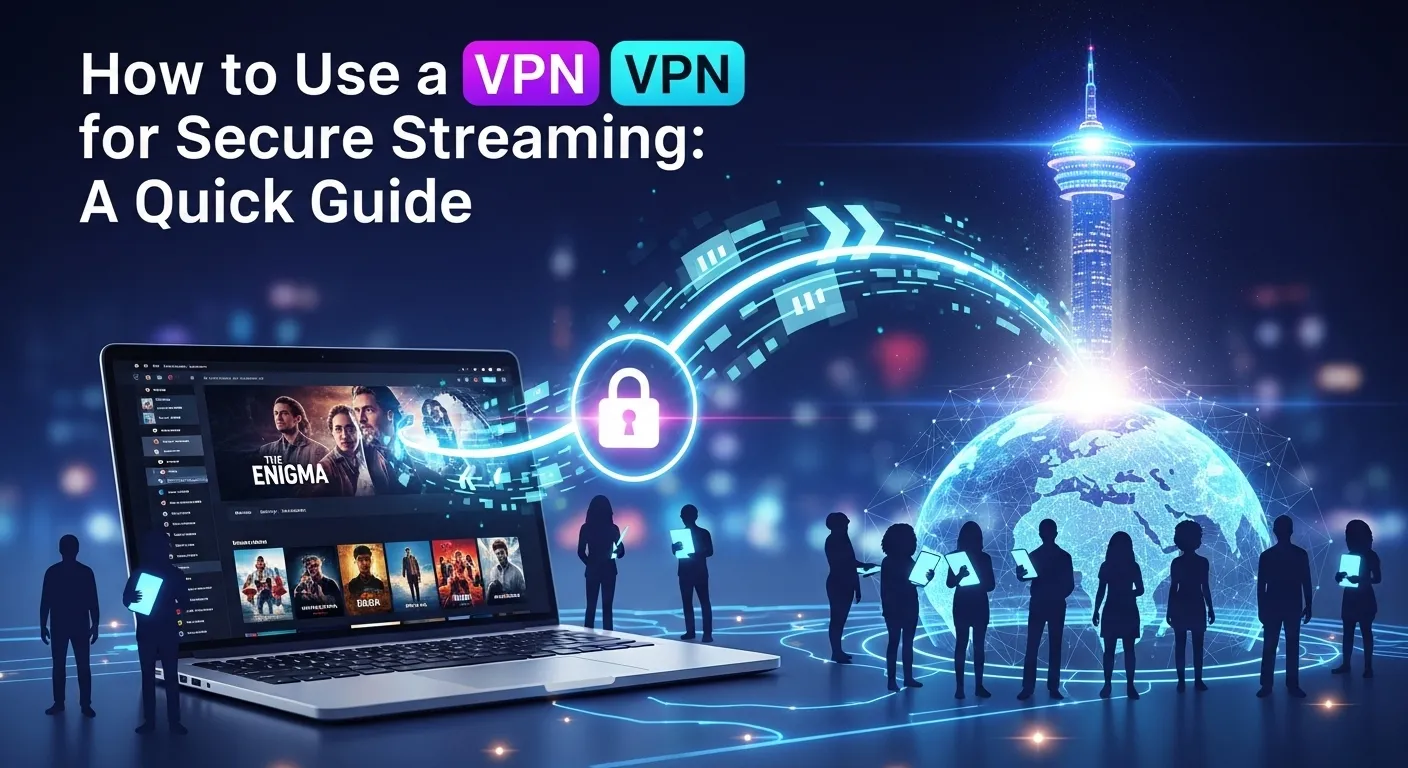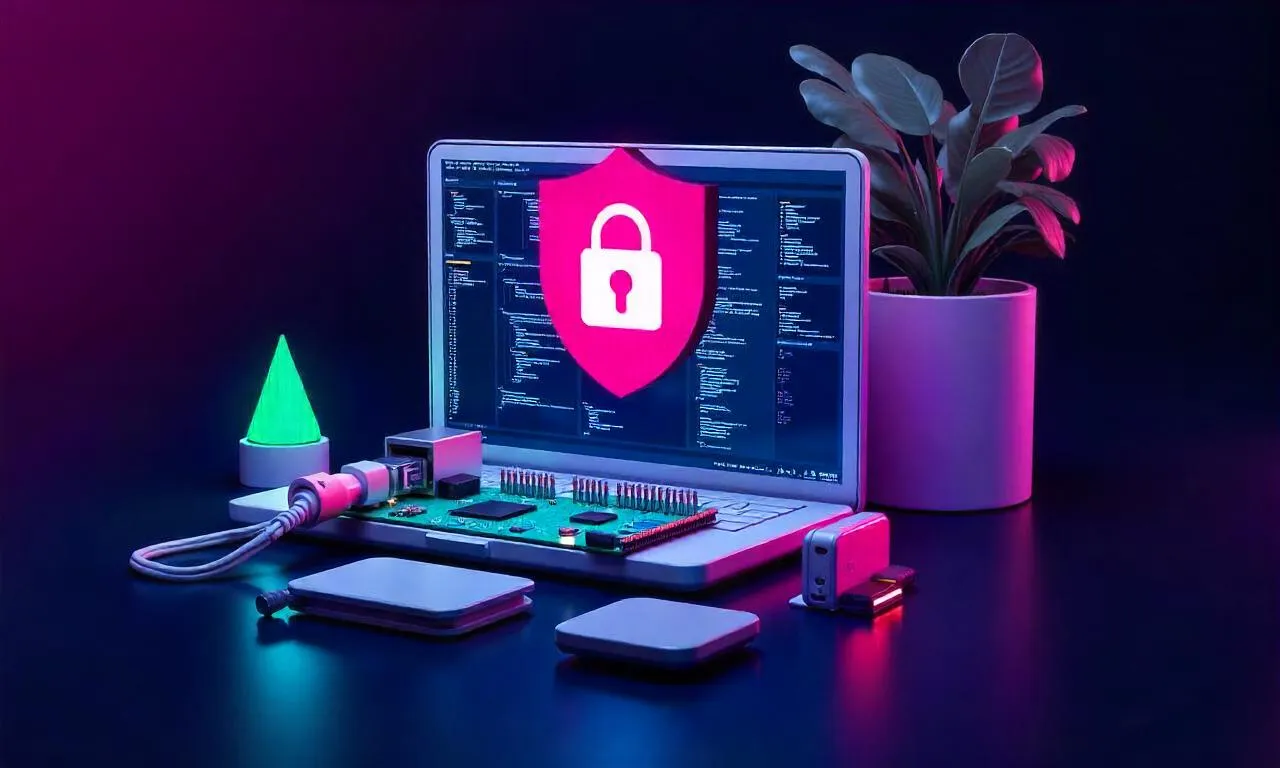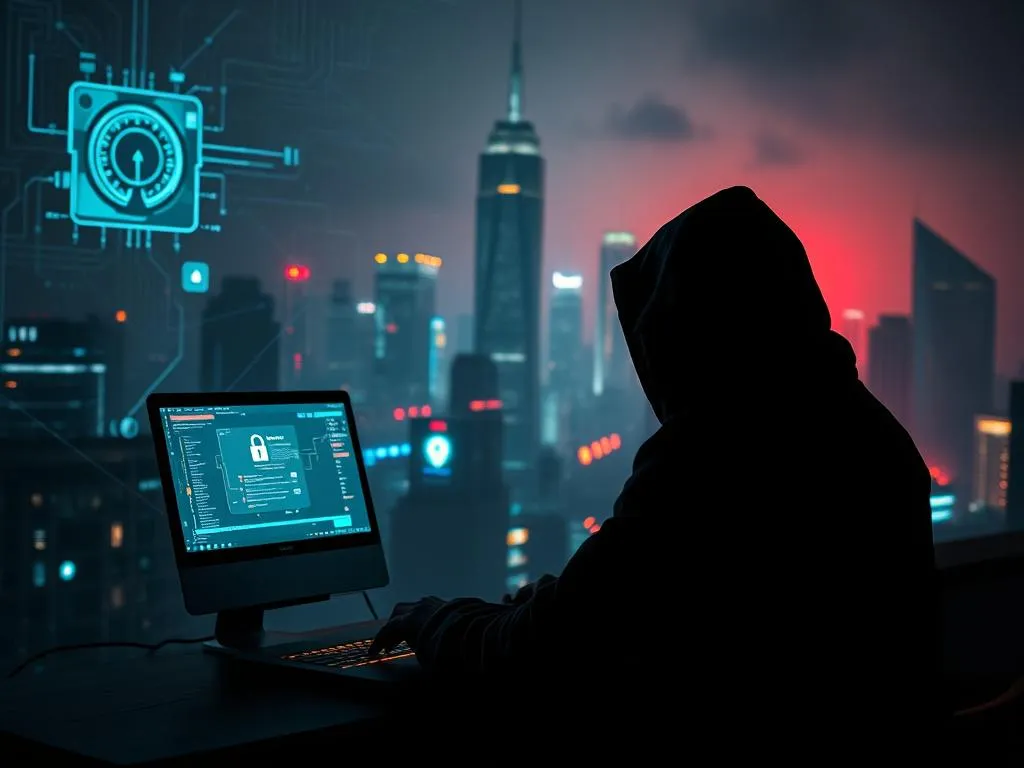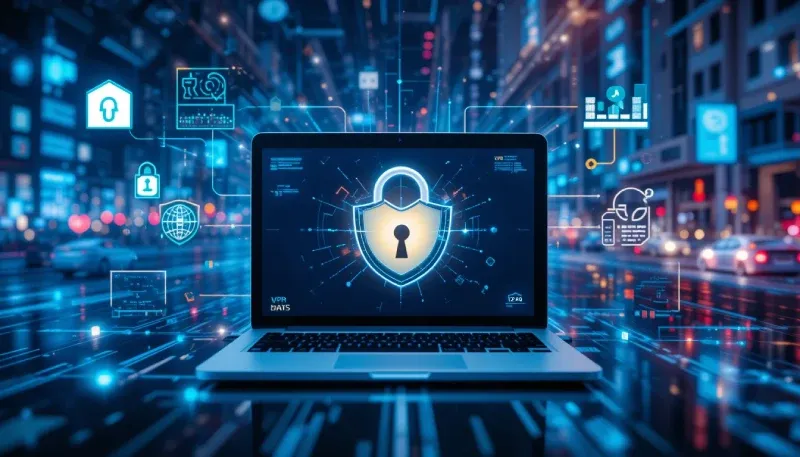In today's digital age, streaming has become our primary source of entertainment, from binging the latest hit series to watching live sports. However, this convenience often comes with hidden risks, including privacy vulnerabilities, ISP throttling that ruins your movie night with endless buffering, and frustrating geo-restrictions that lock you out of content you want to see. This is where a Virtual Private Network (VPN) transforms from a technical tool for cybersecurity experts into an essential utility for every streamer. Understanding how to use a VPN for secure streaming is no longer a niche skill but a fundamental step towards reclaiming your digital freedom and ensuring a smooth, private, and unrestricted viewing experience. This guide will walk you through everything you need to know, from the core reasons you need a VPN to advanced techniques for power users.
Table of Contents
ToggleUnderstanding the "Why": The Core Benefits of Using a VPN for Streaming
Before diving into the "how," it's crucial to understand the "why." Using a VPN for streaming is not just about accessing more content; it's a fundamental move to enhance your security, privacy, and overall viewing quality. When you connect to the internet, your Internet Service Provider (ISP) can see everything you do online, including which streaming platforms you use and how much data you consume. This visibility leaves you vulnerable to speed throttling, data monitoring, and potential security threats, especially when using public Wi-Fi networks in cafes, airports, or hotels. A VPN acts as a protective shield, creating a secure and encrypted "tunnel" for your internet traffic.
One of the most significant advantages of using a VPN is overcoming ISP throttling. Throttling occurs when your ISP deliberately slows down your internet connection based on your online activities. If they detect high-bandwidth usage, such as streaming in 4K, they might reduce your speed to manage network congestion, leading to frustrating buffering and lower video quality. Because a VPN encrypts your traffic, your ISP can no longer see what you're doing. They can only see that you are connected to a VPN server, but not that you are streaming Netflix or YouTube TV. This encryption makes it impossible for them to selectively throttle your connection based on your activity, often resulting in a more stable and sometimes even faster streaming speed.
Furthermore, a VPN is indispensable for securing your connection on public Wi-Fi. These unsecured networks are notorious hunting grounds for cybercriminals who can easily intercept your data, potentially stealing login credentials for your streaming accounts, financial information, or other personal data. By routing your traffic through an encrypted VPN tunnel, you make your data unreadable to anyone snooping on the network. This ensures that your streaming sessions—and any other online activity—remain private and secure, no matter where you are. Finally, a VPN grants you the power to bypass geo-restrictions, unlocking a world of content. Streaming services often have different libraries for different countries due to licensing agreements. A VPN lets you connect to a server in another country, making it appear as if you are browsing from that location and giving you access to its exclusive content library.
Choosing the Right VPN for a Flawless Streaming Experience
Not all VPNs are created equal, and choosing the wrong one can lead to a frustrating experience worse than not using one at all. For streaming, the three most critical factors are speed, server network, and security protocols. A fast VPN is non-negotiable. Streaming, especially in HD or 4K, is a data-intensive activity. While all VPNs will introduce some degree of speed loss due to the encryption and rerouting process (known as latency), premium VPNs invest heavily in high-speed servers and optimized protocols like WireGuard® to minimize this impact. A slow VPN will result in constant buffering, pixelated images, and a ruined viewing experience.
The size and distribution of a VPN's server network are equally important. A provider with a large number of servers in many different countries offers two key benefits. First, it increases your chances of finding an uncrowded server close to your physical location, which generally results in better speeds. Second, it gives you more options for bypassing geo-restrictions. If you want to access the US library of a streaming service, you need a VPN with reliable servers in the United States. A provider with thousands of servers globally ensures you can always find a working connection to unlock content from the UK, Japan, Australia, or anywhere else you desire.
Finally, robust security and a strict privacy policy are the foundation of a trustworthy VPN. Look for providers that offer modern encryption standards like AES-256 and secure protocols such as OpenVPN and WireGuard®. Most importantly, ensure the VPN has a zero-logs or no-logs policy that has been independently audited. This policy guarantees that the provider does not track, store, or share any data about your online activities, including the websites you visit or the content you stream. Without this policy, you are simply trading surveillance by your ISP for surveillance by your VPN provider, defeating a primary purpose of using the service.
Key Features to Look For
When comparing top-tier VPNs, several specific features can dramatically improve your streaming experience. A Kill Switch is an essential security feature that automatically disconnects your device from the internet if the VPN connection drops unexpectedly. This prevents your real IP address from being accidentally exposed to your ISP or the streaming service, protecting your privacy at all times. Without a kill switch, a momentary VPN disconnection could reveal your true location and activity, potentially leading to throttling or a block from the service.
Another incredibly useful feature is Split Tunneling. This allows you to choose which apps or websites use the VPN connection and which use your regular, unprotected internet connection. For example, you could route your streaming app's traffic through a US VPN server to watch American content while simultaneously browsing local news websites or accessing your online banking app (which might block foreign IP addresses) through your standard ISP connection. This provides flexibility and optimizes performance by not encrypting unnecessary traffic, ensuring your local activities remain fast and functional. Some providers even offer dedicated streaming servers, which are specifically optimized and maintained to work with popular platforms, further reducing the chance of being blocked.
Free vs. Paid VPNs: A Critical Comparison
The temptation of a "free" VPN is strong, but it's a choice that almost always comes with significant compromises, especially for streaming. Free VPNs need to make money somehow, and they often do it by logging and selling your user data to third-party advertisers, which completely negates the privacy benefits. They also typically impose strict limitations on speed, monthly data usage, and server locations. You might be restricted to just a few servers, all of which are likely to be slow and overcrowded, making smooth streaming virtually impossible. Worse, some free VPNs have been caught bundling malware or intrusive ads with their software.
In contrast, a paid VPN operates on a transparent subscription model. This revenue allows them to invest in a fast, global server network, cutting-edge security technologies, and 24/7 customer support. With a premium VPN, you get unlimited bandwidth, high-speed connections, and access to thousands of servers worldwide. They are financially incentivized to protect your privacy with audited no-logs policies because their reputation depends on it. While it requires a small monthly investment, a reputable paid VPN is the only reliable way to ensure a secure, private, and buffer-free streaming experience. It's an investment in both your entertainment and your digital security.
A Step-by-Step Guide to Setting Up Your VPN for Streaming
One of the best things about modern VPN services is how incredibly user-friendly they have become. The days of complex manual configurations are largely over. Setting up a VPN on your favorite streaming device, whether it's a computer, smartphone, or smart TV, can be done in just a few minutes. The process is designed to be intuitive, even for those who aren't tech-savvy. Essentially, it boils down to three simple stages: choosing and subscribing to a reputable VPN provider, downloading and installing their dedicated application, and connecting to a server.
The elegance of this system is its consistency across different platforms. The steps for setting up a VPN on a Windows PC are remarkably similar to setting it up on an Android smartphone or an Amazon Fire TV Stick. The core principle remains the same: the app handles all the complex technical work of encryption and routing, leaving you with a simple interface where you just need to press a "connect" button. This ease of use is a primary reason why VPNs have transitioned from a niche cybersecurity tool to a mainstream consumer product for enhancing online entertainment.
This section will provide a clear, step-by-step walkthrough of the entire process. We will cover how to get the software onto your device and how to choose the best server for your specific needs, whether you're prioritizing raw speed for a 4K movie or trying to access a specific country's content library. By following these simple instructions, you'll be ready to stream securely and without limitations in no time.
Installing and Configuring the VPN on Your Device
The first step is to choose a high-quality VPN provider and sign up for a subscription plan on their official website. Reputable providers like ExpressVPN, NordVPN, or Surfshark are popular choices for streaming due to their excellent performance and features. Once you've created your account, navigate to the "Downloads" section of their website. You will see a list of dedicated applications for all major operating systems, including Windows, macOS, Android, iOS, and Linux. Click on the appropriate download link for your device.
After downloading the installation file, run it and follow the on-screen prompts. The installation process is typically straightforward and automated, much like installing any other piece of software. Once installed, launch the VPN application and log in using the credentials you created during sign-up. The app's main screen will usually feature a large "Connect" button and a list of available server locations. At this point, the VPN is fully installed and ready to use. There's usually no need for manual configuration, as the app comes pre-configured with the best settings for a balance of speed and security.
Connecting to the Right Server for Optimal Performance

Choosing the right server is the most important step for a great streaming experience. Your choice will depend on your goal. If your primary aim is security, privacy, and avoiding ISP throttling while watching your local content, you should connect to a server that is geographically closest to your actual location. This minimizes the physical distance your data has to travel, which in turn minimizes latency and maximizes your connection speed. Most VPN apps have a "Quick Connect" or "Smart Location" feature that will automatically select the fastest server for you based on this principle.
If your goal is to bypass geo-restrictions and access content from another country, you must connect to a server located within that specific country. For example, to watch a show that is only available on BBC iPlayer, you would need to open your VPN app's server list, find the United Kingdom, and connect to any server located there. Once connected, your device's IP address will be replaced with one from the UK, and BBC iPlayer will grant you access as if you were physically there. Some VPNs even offer servers labeled for specific streaming services (e.g., "US Netflix Optimized") to make this process even easier.
Troubleshooting Common Streaming Issues with a VPN
Even with a top-rated VPN, you might occasionally run into issues. The most common problems include slower-than-expected speeds, the streaming service detecting and blocking your VPN, or frequent disconnections. It's important to remember that streaming services and VPN providers are in a constant "cat-and-mouse game." Services like Netflix, Hulu, and Amazon Prime Video actively work to identify and block IP addresses associated with VPNs to enforce their licensing agreements. Premium VPNs, in turn, constantly add new servers and IP addresses to stay one step ahead.
When a problem arises, don't panic. Most issues can be resolved with a few simple troubleshooting steps. Often, the solution is as easy as disconnecting from your current server and connecting to a different one in the same country. This can give you a new IP address that hasn't been blacklisted by the streaming service yet. Clearing your browser's cache and cookies can also help, as websites can store location data that might conflict with your VPN's IP address.
If you're experiencing persistent slow speeds, try switching VPN protocols within the app's settings. The WireGuard® protocol is generally the fastest option, while OpenVPN (UDP) offers a good balance of speed and reliability. If problems continue, don't hesitate to contact your VPN provider's customer support. They have dedicated teams that are knowledgeable about which servers are currently working with which streaming platforms and can provide you with a specific list of servers to try.
| Issue | Potential Cause | Solution(s) |
|---|---|---|
| Slow Speeds & Buffering | 1. Server Overload<br>2. Physical distance to server<br>3. Inefficient VPN protocol | 1. Disconnect and reconnect to a different, less crowded server.<br>2. Choose a server physically closer to your location (if not bypassing geo-blocks).<br>3. Switch to a faster protocol like WireGuard® in the VPN app settings. |
| Streaming Service Blocked | 1. The server's IP address has been blacklisted.<br>2. Browser cache is revealing your true location. | 1. Switch to a different server in the same country.<br>2. Use a server specifically optimized for streaming if available.<br>3. Clear your browser's cache and cookies, then reconnect. |
| VPN Disconnects Frequently | 1. Unstable network connection (Wi-Fi).<br>2. Firewall or antivirus interference.<br>3. VPN protocol is being blocked. | 1. Ensure your primary internet connection is stable.<br>2. Temporarily disable your firewall/antivirus to test, or add an exception for the VPN app.<br>3. Try switching between different protocols (e.g., from UDP to TCP). |
Advanced VPN Techniques for Power Streamers
Once you've mastered the basics, you can explore more advanced techniques to integrate a VPN even more seamlessly into your streaming setup. For households with multiple devices, installing a VPN directly onto your router is a game-changer. By configuring the VPN on your router, every device connected to your Wi-Fi network—including smart TVs, game consoles (like PlayStation or Xbox), and streaming devices like Apple TV or Roku that don't have native VPN app support—is automatically protected. All their traffic is routed through the VPN tunnel without needing to install an app on each individual device.
This method provides comprehensive, always-on protection for your entire home network. However, it does have a couple of drawbacks. The setup process is more technical and requires a VPN-compatible router or flashing custom firmware like DD-WRT or Tomato. Additionally, since the router's processor is handling all the encryption, speeds may be slower than using a dedicated app on a powerful computer or smartphone. Despite this, for ease of use across many devices, a router setup is an elegant and powerful solution.
Another advanced feature to leverage is Split Tunneling, which we touched on earlier. Mastering this feature can significantly enhance your multitasking abilities. Imagine you want to stream a UK-exclusive sports match through your VPN while ordering a local food delivery. With split tunneling, you can configure your browser or streaming app to use the UK VPN server while the food delivery app uses your regular, local internet connection. This prevents payment issues or location errors on the local app, providing the best of both worlds. Similarly, you can exclude bandwidth-intensive activities like online gaming from the VPN to keep your ping low, while keeping your streaming and browsing traffic encrypted. This level of granular control is perfect for power users who demand flexibility and peak performance for all their online activities. A related technology, Smart DNS, is also worth mentioning. It's offered by many VPN providers and is a great alternative for devices that don't support VPNs. It only reroutes your DNS queries to unblock content and is faster than a VPN, but it offers no encryption or privacy protection.
Frequently Asked Questions (FAQ)
Q: Is it legal to use a VPN for streaming?
A: In most countries, including the United States, Canada, and the UK, using a VPN is completely legal. However, using a VPN to bypass geo-restrictions may violate the terms of service of the streaming platform you are using. While streaming services rarely ban users for this, they do actively try to block VPN connections. It's always wise to check your local laws and the streaming service's user agreement.
Q: Will a VPN completely eliminate buffering?
A: A VPN can significantly reduce or eliminate buffering, but it's not a magic bullet. Buffering can be caused by many factors, including your base internet speed, a slow VPN server, or issues with the streaming service itself. A VPN can eliminate buffering specifically caused by ISP throttling. For the best results, use a premium VPN with high-speed servers and ensure your base internet plan is fast enough for HD or 4K streaming.
Q: Can I use a single VPN subscription on multiple devices?
A: Yes, nearly all premium VPN providers allow you to connect multiple devices simultaneously under a single subscription. The number of simultaneous connections typically ranges from 5 to 10, with some providers even offering unlimited connections. This allows you to protect your laptop, smartphone, tablet, and other devices all at the same time.
Q: What is the best VPN protocol for secure streaming?
A: For the best balance of speed and security, the WireGuard® protocol is widely considered the top choice for streaming. It is modern, lightweight, and significantly faster than older protocols. OpenVPN is another excellent and highly secure alternative, particularly its UDP variant, which is generally faster than TCP. Most top-tier VPN apps will allow you to easily switch between protocols in their settings menu.
Conclusion
In the modern streaming landscape, a VPN has evolved from a luxury to a necessity. It is the single most effective tool for ensuring your online entertainment is secure, private, and free from the arbitrary restrictions of ISPs and content distributors. By encrypting your connection, a VPN shields you from the prying eyes of your internet provider, defeating frustrating speed throttling and protecting your sensitive data from cybercriminals on public Wi-Fi. It empowers you to break down digital borders, granting you access to a global library of films, TV shows, and live events that would otherwise be unavailable.
Learning how to use a VPN for secure streaming is a straightforward process that yields immense benefits. By choosing a reputable, high-speed provider with a strict no-logs policy, you are making a small investment that pays huge dividends in performance and peace of mind. Whether you're a casual viewer looking for a smoother movie night or a power streamer wanting to protect your entire home network, the steps outlined in this guide will help you unlock the full potential of your streaming services. Ultimately, a VPN puts you back in control of your digital experience, ensuring your time online is exactly as it should be: fast, safe, and limitless.
***
Summary
This guide provides a comprehensive overview of how to use a VPN for secure, private, and unrestricted streaming. It begins by explaining the core reasons for using a VPN: to bypass ISP throttling that causes buffering, to secure your connection on public Wi-Fi, and to overcome geo-restrictions to access a global content library. The article stresses the importance of choosing the right VPN, focusing on criteria like high speeds, a large server network, and robust security features like a kill switch and a strict no-logs policy. It also contrasts the significant risks and limitations of free VPNs with the reliability and performance of paid services.
The guide then offers a simple, step-by-step process for setting up a VPN on any device, which involves subscribing to a service, installing the app, and selecting the appropriate server—either one close by for speed or one in a target country to unblock content. A troubleshooting section, complete with a table, addresses common issues like being blocked by a streaming service or experiencing slow speeds, offering practical solutions. For advanced users, it explores techniques such as installing a VPN on a router for whole-home protection and using split tunneling for greater flexibility. The article concludes by reinforcing that a VPN is an essential tool for any modern streamer, providing security, privacy, and freedom in an increasingly restrictive digital world.

















